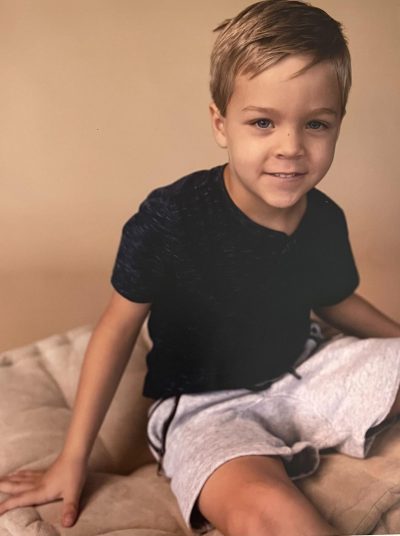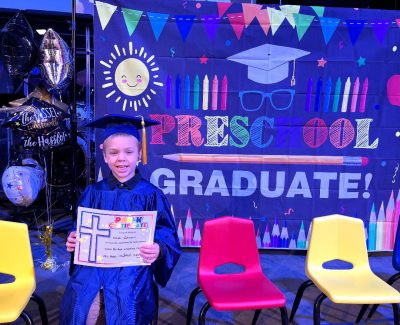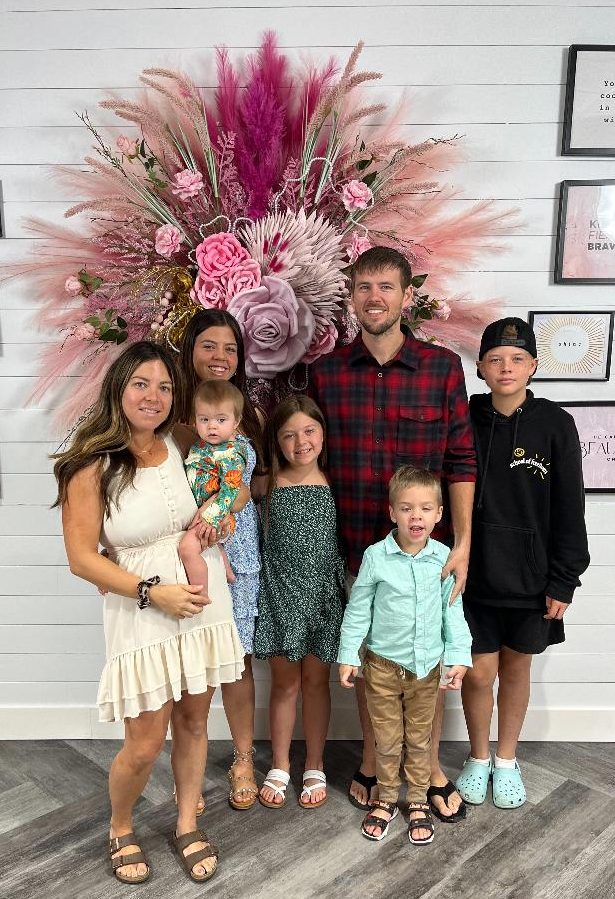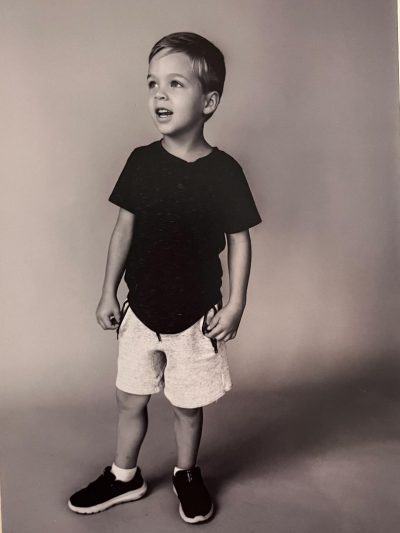Noah’s Journey: Living and thriving with LCA9 NMNAT1
Five-year-old Noah Johnson lives in a special place where he can see rockets shoot into the air at night.
“I can see,” he yells to his mom, Stephanie. “I can see the rocket!”
One of the big joys of living in Melbourne on Florida’s Space Coast is witnessing dramatic liftoffs from nearby Cape Canaveral, especially when it’s dark.
“It’s so heartwarming because he can see what everyone else can see,” his mom said.
Noah also can see colors, faces, and at night, he can see the moon.
During the day, he can hear the booming roar of the magnificent engines, but unlike in darkness, he can’t see the spacecraft soar into the great beyond.

Noah
Stephanie and her husband, Brian, noticed in 2018 the rapid, side-to-side movements in the eyes of their 4-month-old. Stephanie now knows that the eye-movement condition, known as nystagmus, presents as a symptom of the rare inherited retinal disease Leber congenital amaurosis, known as LCA.
After following up with a pediatric ophthalmologist, the doctor asked Stephanie’s other children if they could leave the room, while she wondered, “What is going on?”
The family left the office with many questions and only one vague answer: Something was extremely concerning about Noah’s retina.
Getting a confirmed genetic diagnosis
Noah soon underwent what his mom described as a “horrible and kind of brutal” eye exam. She wants doctors and parents to understand the difficulty of getting an infant to sit still and open his eyes.
The extensive exam used eye hooks to expose his eyeball.
“They put the ultrasound gel directly on the eyeball. I am so thankful as a parent that we’re beyond that, as it was extremely difficult to watch and for him to experience.
“Everyone has their own journey. If I had known there were better imaging options when he got older, I would have asked more questions and inquired if we could wait. The imaging is different and a 2-year-old has the ability to sit and look straight.”
The couple declined an electroretinography (ERG) test that detects abnormalities in retinal function. Even if the earlier testing had gone more smoothly, they didn’t want the doctors to perform the test.
“We were not comfortable putting him under anesthesia,” Stephanie said. “It would give a disease diagnosis but would not confirm the type of LCA. For us we decided against it, for now.”

Noah graduating from Pre-K
Noah’s parents instead moved forward with genetic testing, receiving their son’s diagnosis of LCA and a confirmed genetic diagnosis of LCA9 NMNAT1.
“I can tell you this, when we first got Noah’s diagnosis, it was extremely emotionally hard, and it took a whole season of trying to come to grips with it,” she said. “What does it look like? We don’t wear glasses, no one in our family wears glasses or has anything wrong with their vision. It came completely out of nowhere; it was a bit of a shock.
“We just dove deep into our faith, and we had so much of a peace about it. We just cried to God about it. That sustained us through that time of all these things going through your head about what he’ll ever be able to do and whether vision is the only issue.
“There’s a still a unique peace about it that we carry to this day.”
Looking forward to the 2023 LCA Family Conference
The mother of five, working at home full-time as a health insurance account manager, and her husband, who is an occupational therapist with the Veterans Administration, sought out as many people and organizations as possible to find services, to understand LCA, and to learn about retinal disease research.
“I was thinking of people to walk this journey with because it’s an extremely rare diagnosis,” Stephanie said. “I was trying to find other people who have walked through this and are now adults.”
She also attended the 2019 Hope in Focus LCA Family Conference in Philadelphia, where she connected with other families living with LCA and researchers working on treatments for the disease.
And she’s planning to attend Hope in Focus’ third LCA Family Conference this week from June 23-24, 2023.

The Johnson Family: (L) Stephanie (mom) holding Addisyn; Faith (behind Addisyn); Emma, Brian (dad), Noah, and Ryan
“I think the LCA conference is so vital. It was a great experience, and I’m looking forward to it even more this year.
“We’ve been at this much longer. We know more, we know what to ask. With Noah going into kindergarten, it’s important to connect with families and talk about how their children went through kindergarten.”
While she’s excited about advances in LCA research that could help Noah, she worries about the effectiveness and risks of trying new therapies.
“The progress made in just the past five years is amazing, and we are optimistic for further advancements, especially for NMNAT1.”
Biotech to advance NMNAT1 gene therapy research
Stephanie finds comfort knowing Noah’s form of LCA is among three in the scope of research advancement by Opus Genetics, a biotech created through the Foundation Fighting Blindness’ Retinal Degeneration Fund (RD Fund) to invest in projects in, or advancing toward, early-stage clinical trials.
Ben Yerxa, PhD, Chief Executive Officer of Opus, characterized the company as a first-of-its-kind model for patient-focused development.
“As the first company launched by the Foundation’s venture arm, RD Fund, Opus is uniquely positioned to bring experts, resources, and patients together to efficiently advance ocular gene therapies for small groups of patients that to-date have been neglected.”
Opus’ lead program addresses mutations in the LCA5 gene encoding the lebercilin protein. The next one focuses on LCA13 RDH12, caused by mutations in the retinal dehydrogenase gene.
The company’s third program targets LCA9 NMNAT1, the gene mutation affecting Noah’s vision.
Stephanie met the Foundation’s Ben Shaberman and Ben Yerxa at the 2019 conference when he served as Foundation’s CEO.
“It just feels so exciting that he is leading Opus. He is a wealth of knowledge for the blind community and has been essential in raising money for research, as money is such a major part of moving this research forward.”
Onward to kindergarten
Doctors think Noah’s vision is 20/200, with little central vision and more peripheral vision. Considered legally blind, Noah navigates well, with most people not even knowing he has vision loss.
“I’m just excited, but nervous, about him going into the school this fall, just because I’ve never walked this journey with a school-aged child.”
Stephanie and Brian look forward to meeting and talking with other families living with LCA to gain insight into their son’s progress.
For now, though, Noah continues enjoying his favorite food – pepperoni pizza – and his favorite things: Toy Story movie’s Buzz Lightyear, monster trucks, and, at night: the rockets and the moon.
